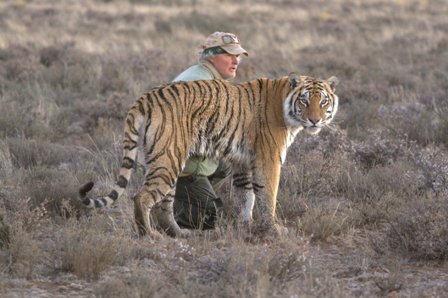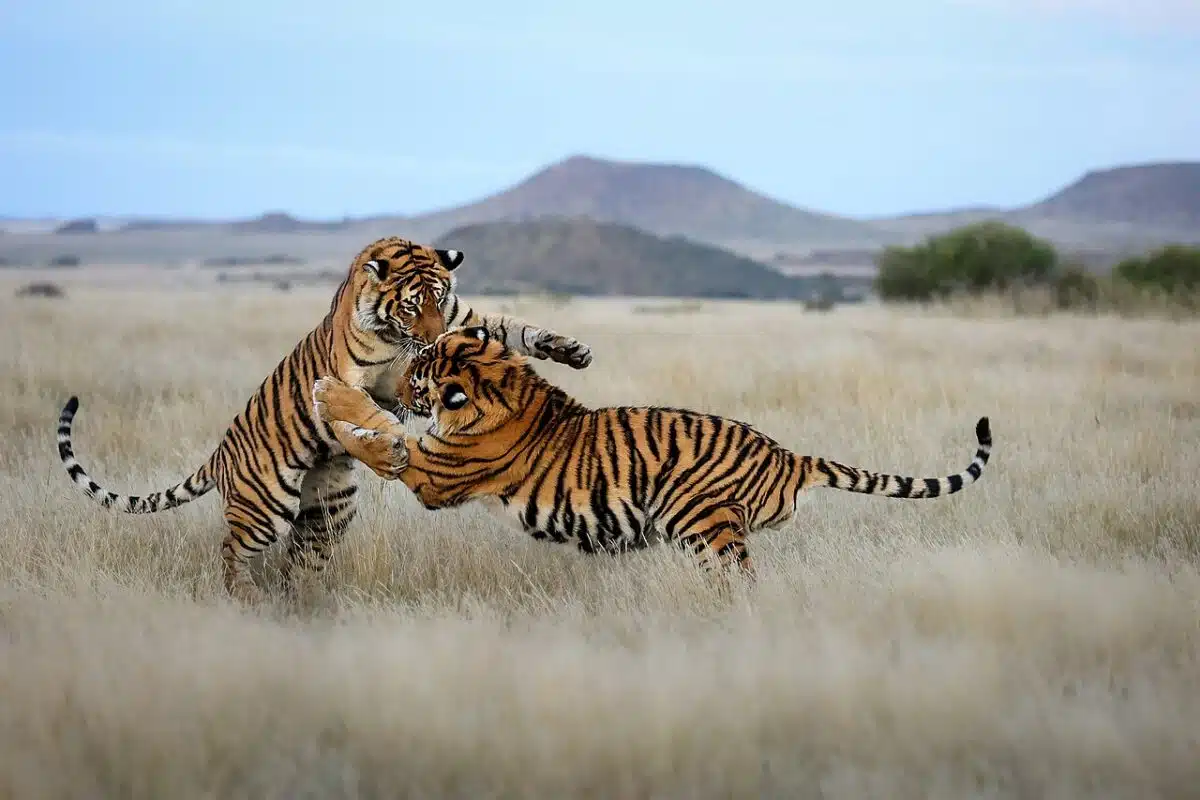Tigers are native to many parts of Asia, so what might they be doing roaming around the African savannah? Unfortunately, it’s not to try out the local cuisine (biltong, anyone?), but rather as part of an eclectic conservation approach.
Today, approximately 5,500 individual tigers remain in the wild.
Unfortunately, tiger conservation has not been made a priority in many parts of Asia, leading to their continued status of being “threatened.” As a result, organizations outside of Asia have made it their mission to implement tiger conservation programmes.
Renowned conservationist, John Varty, has brought to realization a remarkable approach to tiger conservation – the Tiger Canyons Project in South Africa.
Who is John Varty?

John Varty is something of a legend among South African conservationists. He has had malaria 14 times, and survived a helicopter crash, a tiger attack, melanoma cancer, and triple bypass heart surgery.
In addition to his filmmaking and book-writing accolades, he has established two game reserves, Londolozi Game Reserve and the controversial Tiger Canyons.
The Tiger Canyons Project

At the start of the 20th century, around 100,000 tigers remained in the wild. This decreased to a mere 4,000 tigers in the year 2000, which was when Varty established Tiger Canyon.
Tiger Canyon is a private game reserve in the Free State province, South Africa, which provides sanctuary for the endangered big cat species. The intention of this initiative is to create a self-sustaining population of tigers outside their traditional range in Asia. Tigers are allowed to remain wild and free, as opposed to being caged up in zoos.
Furthermore, Tiger Canyon offers a unique opportunity for wildlife researchers and enthusiasts to study tiger behavior in an unconventional setting.
Tiger Adaptation to Africa

Tigers occur naturally in three climatic territories: frozen tundra, tropical forests and mangrove swamps, and open grasslands.
The Karoo biome, where Tiger Canyon is located, resembles some of these climatic regions. The Karoo is a semi-arid desert, spotted with grass and low scrub, with hot summers and frosty winters.
Over the past twenty years, the tigers have adapted well to the Karoo, with third and fourth generations of tigers having already been born.
Conclusion

The project is a testament to the dedication of conservationists like Varty, who work tirelessly to ensure the survival of species for future generations in the face of daunting challenges.
Read our dedicated article on John Varty!
You may also like:
- Rare Footage of Leopard and Hyena Eating Side by Side
- Watch: Leopard’s Kill in Tree, Game Ranger Explains
- Tiger Safari: The Complete Guide
Join our Forum for free today!

- Glow-in-the-Dark Sharks & Other Fascinating Bioluminescent Fish - July 10, 2024
- Why Flamingos Are Totally Hardcore - July 3, 2024
- Nuclear Tech to Combat Poaching: Radioactive Rhino Horns - July 2, 2024

